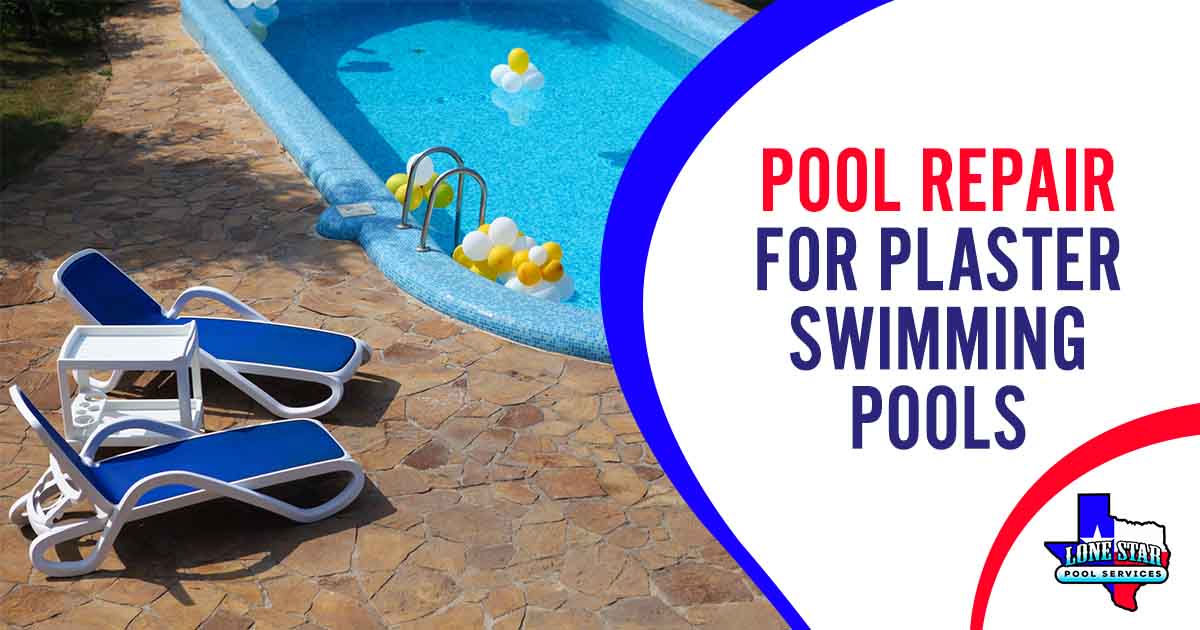When you have an in-ground pool and it’s made of plaster, it may need repair after several years. One of the main things that tend to happen with plaster pools is that it forms surface cracks. These cracks can usually be fixed, depending on the severity. Let’s take a closer look at pool surface cracks and how a professional pool company like Lone Star Pool Services can help with pool repair for plaster swimming pools.
What are pool surface cracks?
A pool surface is simply a crack in the plaster surface of the pool. Surface cracks are typically not as serious as structural cracks. A surface crack usually doesn’t mean that your pool is leaking water. With a structural crack, your pool can be leaking water and can be a serious problem. With that said, you shouldn’t brush off fixing a pool surface crack. If you have a surface crack you should fix it as quickly as possible. If not, it could turn into a larger problem.
What causes pool surface cracks?
Several things can be attributed to pool surface cracks. Shrinkage is one. These are seen in the top step, but can also run throughout the walls and floor of the pool. Shrinkage cracks are common when the pool is first placed. Things like excessive temperatures and too much wind or water can be to blame. If your cracks are associated with when your pool was put in, several scenarios that may be to blame:
- The plaster was too wet
- The plaster was too hot & contained too much calcium
- Expansion of the substrate beneath the plaster
- Alkali-Silica Reaction (ASR) within the plaster mix
It’s not uncommon for pools to develop surface cracks over time that have nothing to do with the installment process. Small hairline cracks can develop in the plaster walls of the pool. Soil issues can be another major reason for a pool crack in your plaster swimming pool. If uncompacted soil was left when the hole was dug for your pool and the pool was built on top of it, it may result in cracking. Soil movement, especially on hillsides, can cause cracking. Cracks can also turn up in places where the concrete covering the rebar or piping is insufficient. When there isn’t enough cover for the rebar, there may be a pattern of cracks that reflect the rebar pattern. Over time, there can be rust that comes out of these cracks, causing concern. It can expand putting pressure on the concrete, leading to cracks and other damage. Whatever the reason, your main objective should be to now get it fixed as quickly as possible.
How to Fix Pool Surface Cracks
When you first notice a crack on the surface of your pool, you may think that you can just buy some materials and fix it yourself. It’s not that easy! To the untrained eye, it can be difficult to determine if you’re dealing with a surface crack or a structural crack. This is why it’s best to call professionals like Lone Star Pool Services to take a look at your problem. Our experts can assess the problem and advise you about what type of pool repair is best. If it is a true pool surface crack, some water will likely be drained from the pool to expose the crack and to fix it properly. Then, any rough spots will be smoothed down and any loose particles will be taken away. This process requires a pool plaster mix and a liquid cement border. Getting the consistency right is difficult. That’s why it’s important to call pool professionals to get the job done right. Don’t treat this as another DIY project. This may not fix the crack sufficiently and will only lead to more problems down the road, ones that will likely cost you more money and put your pool out of commission for a longer period of time.
How much will to cost to fix pool surface cracks?
This is a tough question to answer because each pool repair for plaster swimming pool is different. There is no standard price. Once a professional comes out and assesses the situation, you can get a better idea of how much it will cost to fix. Typically though, it costs far less to fix a surface crack than it would a structural crack or leak in your pool. That’s why it’s important to get these things checked out as soon as possible. Just like with any repairs in your home, repairs only get more detailed and expensive when they are ignored.

